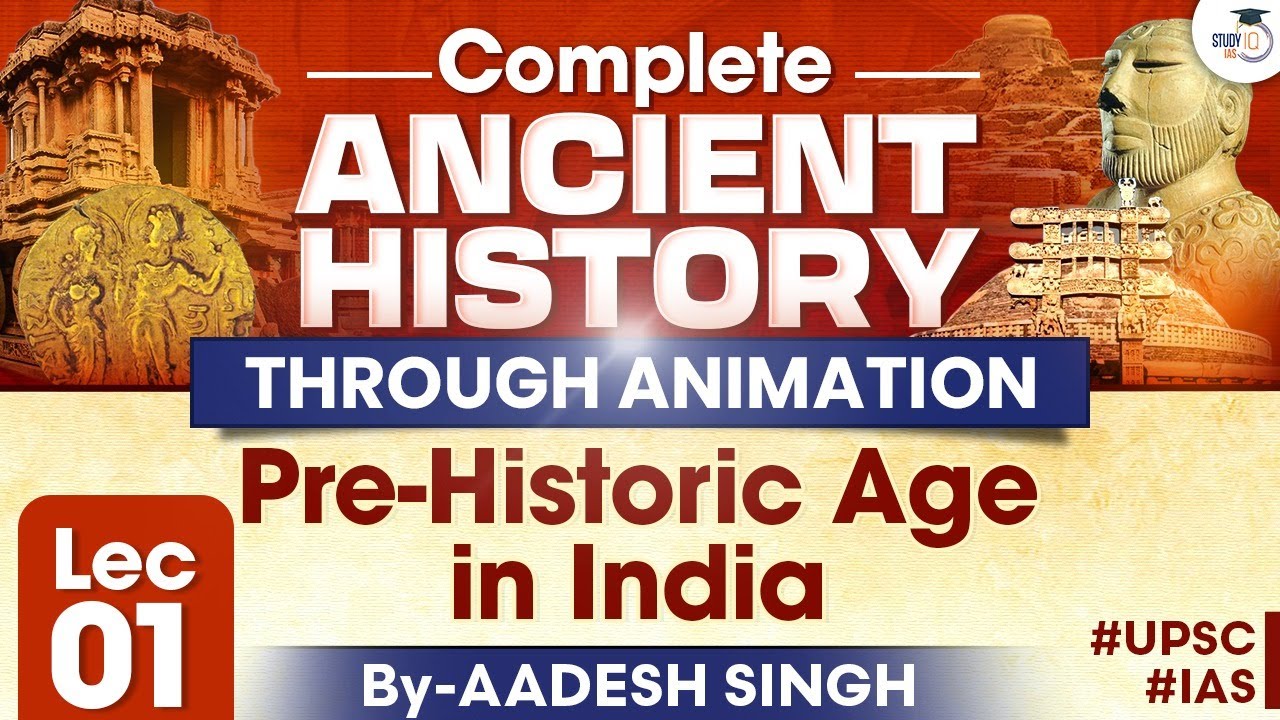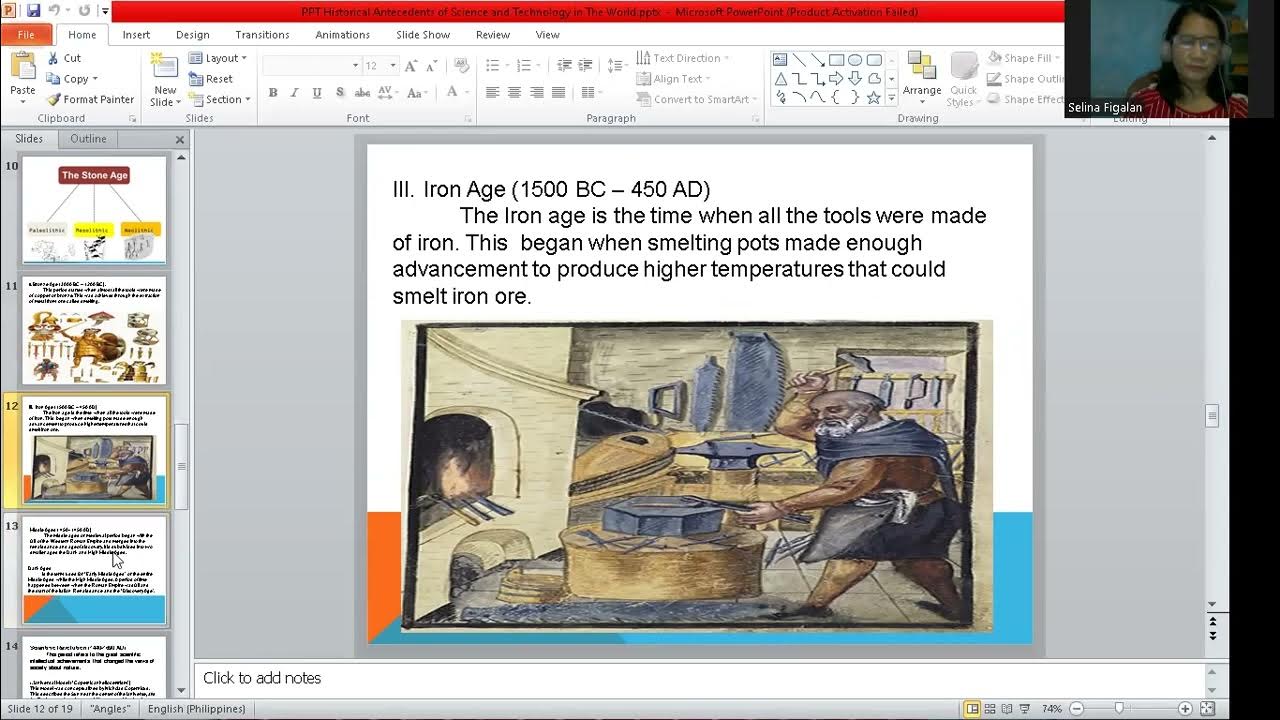The Big Story: Origins of Religion
Summary
TLDRThe video script delves into the beliefs and understanding of the world by Stone Age people. It highlights their empirical approach to survival, with a belief in their centrality to a small, flat universe. They attributed qualities and spirits to various elements, including animals, celestial bodies, and even inanimate objects, leading to a worldview filled with gods and magic. Their stories, often blending fact and fantasy, served to explain natural phenomena and their origins. These narratives shaped their culture, which lacked a concept of social progress, thus limiting the imagination and potential for change. The script portrays a society deeply rooted in tradition and spiritual beliefs, with a strong connection to the natural world and its mysteries.
Takeaways
- 🍂 **Empirical Survival Knowledge**: Stone Age people relied on empirical observations to distinguish between what was poisonous and what could satisfy their hunger for survival.
- 🌌 **Cosmic Centrality**: They assumed a geocentric universe, with themselves at the center of a flat, small world under the sky.
- 🧍 **Anthropocentric View**: Stone Age societies considered themselves 'the people' and viewed strangers as less human and of another sort.
- 🏺 **Spiritual Cannibalism**: They believed consuming parts of a strong beast or a deceased leader could transfer the spirit or qualities to them.
- 🌞 **Animate Cosmos**: The sun and moon were seen as animate beings, and natural formations were associated with the spirits of the deceased.
- 🧘♂️ **Spiritual Materialism**: There was no clear distinction between the spirit and the physical, leading to the belief that preserving a corpse also preserved the spirit.
- 🏃 **Will and Movement**: Movement was attributed to will, with everything from humans to insects, plants, and celestial bodies thought to be moved by intention.
- 🌪️ **Pan-Spiritualism**: The world was seen as filled with many spirits or gods, present in every moving element, including the wind, rivers, and the sun.
- 🪄 **Magical Interpretation**: Phenomena like lightning, thunder, and fire were attributed to magic, with fire seen as both a product and manifestation of spirit.
- 📖 **Mythological Narratives**: Societies used storytelling to explain the world, with myths about creation and the occasional influence of malevolent spirits.
- 🎭 **Ritualistic Magic**: Early religious rituals were forms of attempted magic, often involving imitation, like painting for the aid of childbirth.
- 🌲 **Conservative Worldview**: Hunter-gatherers generally accepted the world as it was, without a concept of social progress or the potential for human advancement beyond their current state.
- 🧠 **Cultural Limitations**: The cultural context limited the imagination and potential of individuals, even those with the biological potential for genius.
Q & A
How did Stone Age people's experiences shape their understanding of the world?
-Stone Age people's experiences with survival shaped their understanding of the world through empirical realities. They drew conclusions about the world based on what satisfied their hunger and what poisoned them.
What was the Stone Age people's perception of their place in the universe?
-They assumed they were at the center of the universe, which they saw as flat, small, and under the sky.
How did Stone Age people view strangers in comparison to themselves?
-They considered themselves as 'the people' and viewed strangers as less human, as creatures of another sort.
What beliefs did Stone Age people have regarding the consumption of certain body parts?
-They believed that by eating the flesh of a strong beast, they might acquire its spirit, or by eating a portion of a deceased leader's body, they might gain his special qualities.
How did Stone Age people interpret the celestial bodies like the sun and moon?
-They assumed the sun and moon were animate beings, moving across the sky.
What was the connection between the dead and the natural world in Stone Age beliefs?
-They believed that recognizing a dead person's face in the shapes on a rock signified the living spirit of that person dwelling within the rock.
How did Stone Age people perceive the concept of spirit and its relation to the body?
-They believed that the body went limp at death because the spirit had left it for the invisible world of spirits, and they saw no need to differentiate between spirit and materiality.
What was the Stone Age people's view on the cause of movement in the natural world?
-They attributed movement to will, believing that their own movement, as well as that of insects, plants, and celestial bodies, was the product of will.
How did Stone Age people perceive the concept of gods?
-They saw the world as filled with many spirits or gods, attributing a god to every moving entity, such as the wind, rivers, and the sun.
What role did storytelling play in the Stone Age people's understanding of their world?
-Storytelling was a crucial part of their worldview, with stories about creation and other phenomena helping them make sense of their surroundings without distinguishing between fact and fantasy.
How did Stone Age people's beliefs about spirits and magic influence their rituals?
-They believed that if gods could perform magic, so could they, leading to the creation of religious rituals as attempts at magic through imitation.
What was the Stone Age people's attitude towards the idea of changing the world?
-Hunter-gatherers were more focused on surviving than changing the world. They believed the world would remain as the gods had made it and lacked a sense of social progress or the potential for human capabilities beyond their current abilities.
Outlines

This section is available to paid users only. Please upgrade to access this part.
Upgrade NowMindmap

This section is available to paid users only. Please upgrade to access this part.
Upgrade NowKeywords

This section is available to paid users only. Please upgrade to access this part.
Upgrade NowHighlights

This section is available to paid users only. Please upgrade to access this part.
Upgrade NowTranscripts

This section is available to paid users only. Please upgrade to access this part.
Upgrade NowBrowse More Related Video

日本史基礎講座#1 温暖化にともなう生活の変化

Art in Early Civilizations

The Stone Age Man | Life Millions Of Years Ago | The Dr Binocs Show | Peekaboo Kidz

Complete History Through Animation | Lec 1 | Pre-Historic Age in India | By Aadesh Singh

Historical Antecedents of Science and Technology in the World

Science, Technology and Society - Introduction
5.0 / 5 (0 votes)